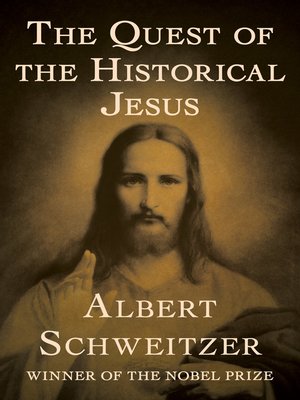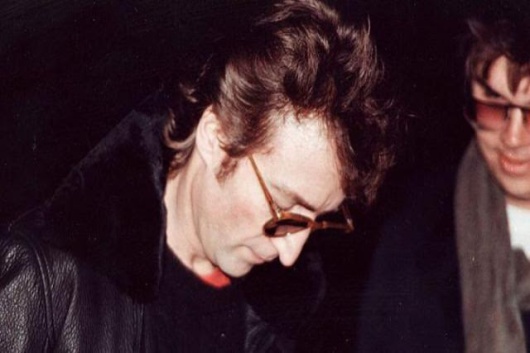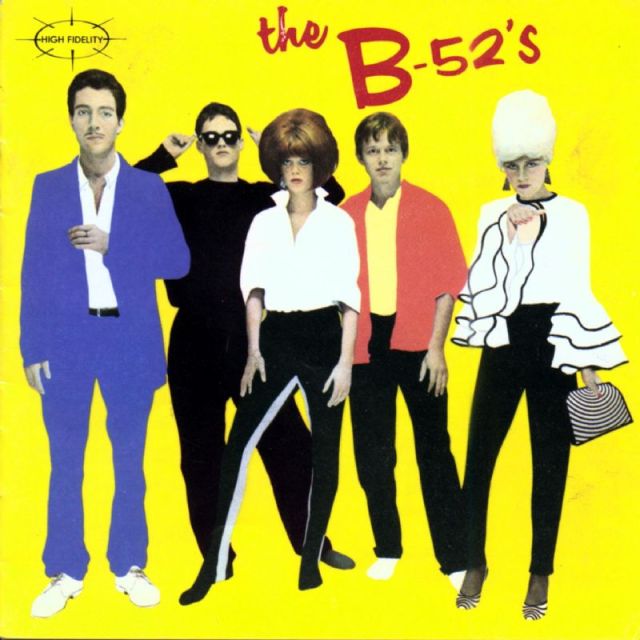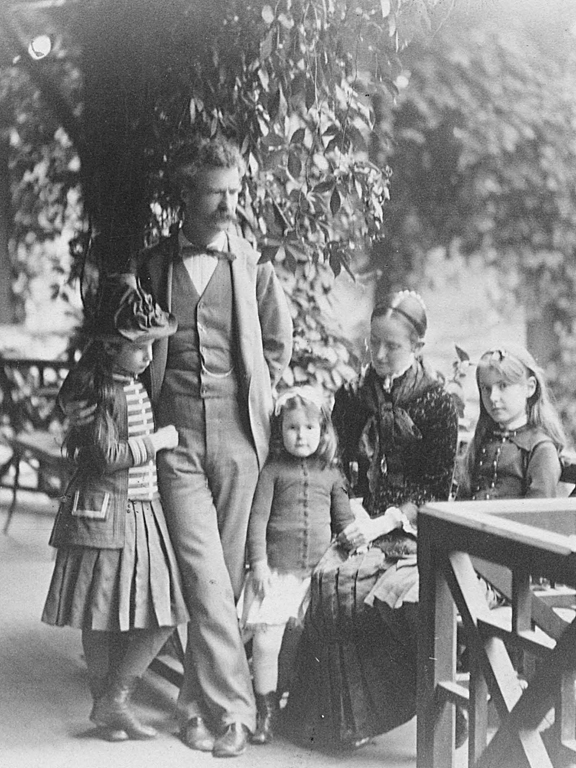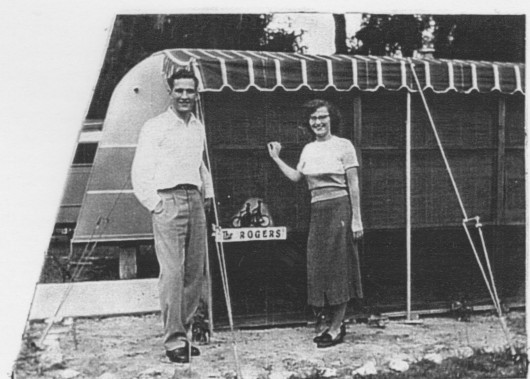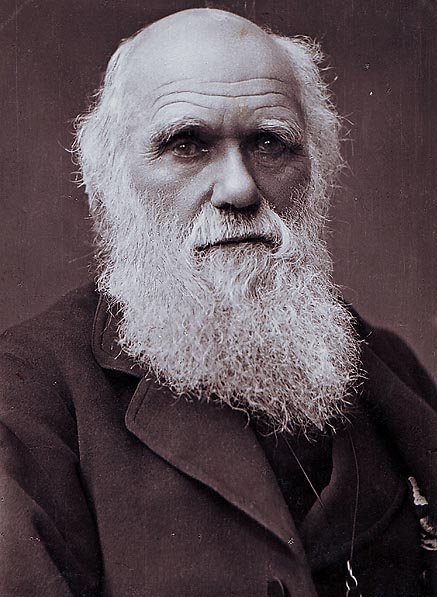Communism is based on materialism but it captures the youth by talking a lot of the rights of the individual but when it comes to power the rights of the individual disappears and it rules by force. Many followers of the Beatles got caught up by the NEW LEFT in the 1960’s.

Paul McCartney — Back In The USSR (Live in Kiev 2008)
Didn’t get to bed last night
On the way the paper bag was on my knee
Man I had a dreadful flight
I’m back in the U.S.S.R.
You don’t know how lucky you are boy
Back in the U.S.S.R. (Yeah)
Gee it’s good to be back home
Leave it till tomorrow to unpack my case
Honey disconnect the phone
I’m back in the U.S.S.R.
You don’t know how lucky you are boy
Back in the U.S.
Back in the U.S.
Back in the U.S.S.R.
They leave the West behind
And Moscow girls make me sing and shout
That Georgia’s always on my mind
Ho yeah!
Ho yeah!
Ho ho yeah!
Yeah yeah!
You don’t know how lucky you are boys
Back in the U.S.S.R.
How Should We then Live Episode 7 small
The drug culture and the mentality that went with it had it’s own vehicle that crossed the frontiers of the world which were otherwise almost impassible by other means of communication. This record, Sergeant Pepper’s Lonely Hearts Club Band, became the rallying cry for young people throughout the world. It expressed the essence of their lives, thoughts and their feelings. Later came psychedelic rock an attempt to find this experience without drugs. The younger people and the older ones tried drug taking but then turned to the eastern religions. Both drugs and the eastern religions seek truth inside one’s own head, a negation of reason. The central reason of the popularity of eastern religions in the west is a hope for a non-rational meaning to life and values.

Francis Schaeffer below is holding the album Beatles’ album SGT PEP in the film series HOW SHOULD WE THEN LIVE? episode 7 “The Age of Non-Reason” in which he discusses the Beatles’ 1960’s generation and their search for meanings and values and that search included the leap into non-reason which included COMMUNISM for many young people. It was a leap into non-reason because even though there was much talk of individual rights the fact is that everywhere communism has been put in the freedoms of the individual were destroyed!!!!!

__
The Beatles were good friends of Allen Ginsberg and Terry Southern and many others who were involved in the FREE SPEECH MOVEMENT in Berkeley in the 1960’s. The movement started off just being about FREE SPEECH, but then it turned quickly to the New Left and the Marxist-Leninist point of view. It was in this atmosphere in the mid-sixties that caused KARL MARX to be a logical choice to be on the cover of Sgt. Pepper’s.




BED PEACE starring John Lennon & Yoko Ono

WHY WAS KARL MARX ON THE COVER? The answer is very simple. Back in Berkeley in 1964 there were the riots that broke out and the Free Speech Movement and this movement was encouraged later by John Lennon and Yoko as they spoke with the protesters by phone in the above video. Also Allen Ginsberg and Terry Southern were good friends with Paul McCartney and they were involved in the Free Speech Movement. The movement started off just being about FREE SPEECH, but then it turned quickly to the New Left and the Marxist-Leninist point of view. It was in this atmosphere in the mid-sixties that caused Karl Marx to be a logical choice to be on the cover of SGT PEP.

1064 University of California, Berkeley
#02 How Should We Then Live? (Promo Clip) Dr. Francis Schaeffer

__

Free Speech Movement leader Mario Savio, left, with folk singer Joan Baez on the University of California at Berkeley campus in 1964.

__

Jean Genet, Allen Ginsberg, William Burroughs, Terry Southern Chicago, 1968
__________
Below Mario Savio, leader of the Berkeley Free Speech Movement, speaks to assembled students

Allen Ginsberg and Paul McCartney playing “A Ballad of American Skeletons”

__
On September 30, 1964, the first large-scale antiwar demonstration in the United States is staged at the University of California at Berkeley, by students and faculty opposed to the war. Nevertheless, polls showed that a majority of Americans supported President Lyndon Johnson’s policy on the war. As I researched to find images to go with the story, I find that it was not just about the war but was about freedom of speech and civil rights.
In the fall of 1964 student activists at UC Berkeley, some of whom had traveled with the Freedom Riders and worked to register African American voters in Mississippi in the Freedom Summer project, had set up information tables on campus and were soliciting donations for civil rights causes.
On September 30 Mario Savio, Arthur Goldberg and Sandor Fuchs lead more than 500 students in protest outside the Presidents Office in Sproul Hall, demanding that they be able to exercise their constitutional rights to free speech. It was on this day that Savio would deliver his famous speech on the Multiversity
Over 500 students would eventually occupy the Sproul building, before being met by anti-protests from numerous fraternities and other student groups. The conflict between FSM members and other students would nearly descend into a riot. Eventually, campus administrators would engage in further negotiations with the students, as they realized that continuing conflict could rip the campus apart.
The administration of the University of California of Berkeley, at the behest of Senator William Knowland, forbade students from organizing on campus for off-campus political activity, such as the daily picket lines sponsored by the Congress of Racial Equality (CORE) that were then occurring in front of restaurants in Oakland’s Jack London Square that refused to hire men & women of color. The students felt that this ban was clearly an unconstitutional abridgement of the rights of the freedom of speech & assembly and determined to challenge it with a test case. One student, Jack Weinberg, set up a card table at the Bancroft Way entrance to Sproul Plaza and was promptly taken into custody by the campus police who deposited him into a Berkeley police car for a quick trip down to the station.
How Should We Then Live – Episode 9 – The Age of Personal Peace & Affluence

Francis Schaeffer asserted:
In some places the Marxist-Leninist line or the Maoist line took over…But the Marxist-Leninism is another leap into the area of nonreason-as idealistic as drug-taking was in the early days. The young followed Marxism in spite of clear evidence that oppression was not an excess of Stalin, but was and is an integral part of the system of communism.
William Lane Craig’s book THE ABSURDITY OF LIFE WITHOUT GOD. Without God there is no meaning in life.
William Lane Craig notes:
First, the area of meaning. We saw that without God, life has no meaning. Yet philosophers continue to live as though life does have meaning. For example, Sartre argued that one may create meaning for his life by freely choosing to follow a certain course of action. Sartre himself chose Marxism.
Now this is utterly inconsistent. It is inconsistent to say that life is objectively absurd and then to say that one may create meaning for his life. If life is really absurd, then man is trapped in the lower story. To try to create meaning in life represents a leap to the upper story. But Sartre has no basis for this leap. Without God, there can be no objective meaning in life. Sartre’s program is actually an exercise in self-delusion. For the universe does not really acquire meaning just because I happen to give it one. This is easy to see: for suppose I give the universe one meaning, and you give it another. Who is right? The answer, of course, is neither one. For the universe without God remains objectively meaningless, no matter how we regard it. Sartre is really saying, “Let’s pretend the universe has meaning.” And this is just fooling ourselves.
The point is this: if God does not exist, then life is objectively meaningless; but man cannot live consistently and happily knowing that life is meaningless; so in order to be happy he pretends that life has meaning. But this is, of course, entirely inconsistent—for without God, man and the universe are without any real significance.
Sartre’s worldview is discussed in the film series “How should we then live?” by Francis Schaeffer below.

How Should We then Live Episode 7 small (Age of Nonreason)
Transcript from “How Should we then live?”:
Humanist man beginning only from himself has concluded that he is only a machine. Humanist man has no place for a personal God, but there is also no place for man’s significance as man and no place for love, no place for freedom.
Man is only a machine, but the men who hold this position could not and can not live like machines. If they could then modern man would not have his tensions either in his intellectual position or in his life, but he can’t. So they leap away from reason to try to find something that gives meaning to their lives, to life itself, even though to do so they deny their reason.
Once this is done any type of thing could be put there. Because in the area of nonreason, reason gives no basis for a choice. This is the hallmark of modern man. How did it happen? It happened because proud humanist man, though he was finite, insisted in beginning only from himself and only from what he could learn and not from other knowledge, he did not succeed. Perhaps the best known of existentialist philosophers was Jean Paul Sartre. He used to spend much of his time here in Paris at the Les Deux Magots.

Sartre’s position is in the area of reason everything is absurd, but one can authenticate himself, that is give validity to his existence by an act of the will. In Sartre’s position one could equally help an old woman across the street or run her down.
Reason was not involved, and there was nothing to show the direction this authentication by an act of the will should take. But Sartre himself could live consistantly with his own position. At a certain point he signed the Algerian Manifesto which declared that the Algerian war was a dirty war. This action meant that man could use his reason to decide that some things were right and some things were wrong and so he destroyed his own system.
Berkeley’s Campus Free Speech Movement at 50
The Free Speech Movement: civil disobedience in Berkeley 1964
Billy Joel – Back In the USSR
How Should We Then Live – Episode 9 – The Age of Personal Peace & Affluence
Mario Savio, leader of the Free Speech Movement at UC Berkeley (1964) – from THE EDUCATION ARCHIVE
Schaeffer compares communism with French Revolution and Napoleon.
1. Lenin took charge in Russia much as Napoleon took charge in France – when people get desperate enough, they’ll take a dictator.
Other examples: Hitler, Julius Caesar. It could happen again.
2. Communism is very repressive, stifling political and artistic freedom. Even allies have to be coerced. (Poland).
Communists say repression is temporary until utopia can be reached – yet there is no evidence of progress in that direction. Dictatorship appears to be permanent.
3. No ultimate basis for morality (right and wrong) – materialist base of communism is just as humanistic as French. Only have “arbitrary absolutes” no final basis for right and wrong.
How is Christianity different from both French Revolution and Communism?
Contrast N.T. Christianity – very positive government reform and great strides against injustice. (especially under Wesleyan revival).
Bible gives absolutes – standards of right and wrong. It shows the problems and why they exist (man’s fall and rebellion against God).
WHY DOES THE IDEA OF COMMUNISM CATCH THE ATTENTION OF SO MANY IDEALISTIC YOUNG PEOPLE? The reason is very simple.
In HOW SHOULD WE THEN LIVE? The Rise and Decline of Western Thought and Culture, the late Francis A. Schaeffer wrote:
Materialism, the philosophic base for Marxist-Leninism, gives no basis for the dignity or rights of man. Where Marxist-Leninism is not in power it attracts and converts by talking much of dignity and rights, but its materialistic base gives no basis for the dignity or rights of man. Yet is attracts by its constant talk of idealism.
To understand this phenomenon we must understand that Marx reached over to that for which Christianity does give a base–the dignity of man–and took the words as words of his own. The only understanding of idealistic sounding Marxist-Leninism is that it is (in this sense) a Christian heresy. Not having the Christian base, until it comes to power it uses the words for which Christianity does give a base. But wherever Marxist-Leninism has had power, it has at no place in history shown where it has not brought forth oppression. As soon as they have had the power, the desire of the majority has become a concept without meaning.
1970 bombing took away righteous standing of Anti-War movement.
Francis Schaeffer mentioned the 1970 bombing in his film series “How should we then live?” and I wanted to give some more history on it. Schaeffer noted:
In the United States the New Left also slowly ground down,losing favor because of the excesses of the bombings, especially in the bombing of the University of Wisconsin lab in 1970, where a graduate student was killed. This was not the last bomb that was or will be planted in the United States. Hard-core groups of redicals still remain and are active, and could become more active, but the violence which the New Left produced as its natural heritage (as it also had in Europe) caused the majority of young people in the United States no longer to see it as a hope. So some young people began in 1964 to challenge the false values of personal peace and affluence, and we must admire them for this. Humanism, man beginning only from himself, had destroyed the old basis of values, and could find no way to generate with certainty any new values. In the resulting vacuum the impoverished values of personal peace and affluence had comes to stand supreme. And now, for the majority of the young people, after the passing of the false hopes of drugs as an ideology and the fading of the New Left, what remained? Only apathy was left. In the United States by the beginning of the seventies, apathy was almost complete. In contrast to the political activists of the sixties, not many of the young even went to the polls to vote, even though the national voting age was lowered to eighteen. Hope was gone.

After the turmoil of the sixties, many people thought that it was so much the better when the universities quieted down in the early seventies. I could have wept. The young people had been right in their analysis, though wrong in their solutions. How much worse when many gave up hope and simply accepted the same values as their parents–personal peace and affluence. (How Should We Then Live, pp. 209-210)

How Should We Then Live – Episode 9 – The Age of Personal Peace & Affluence
Francis Schaeffer pictured below:
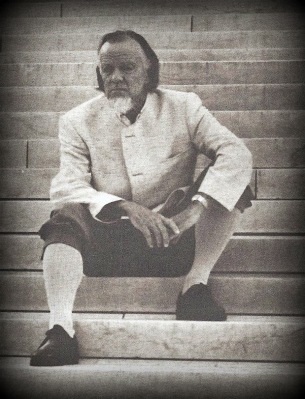
_________________________________
Aug. 24 marked the 41st anniversary of the Sterling Hall bombing on the University of Wisconsin-Madison campus.
Four men planned the bomb at the height of the student protests over the Vietnam War. Back then, current Madison Mayor Paul Soglin was one of the leaders of those student protests in the capitol city. This weekend, Soglin recalled the unrest felt by UW-Madison students.
“The anti-war movement adopted a lot of its tactics and strategies from the civil rights movement which was about ten years older,” said Soglin. “It was one of picketing, demonstration, and passive resistance.”
The four men who planned the bombing focused on the Army Mathematics Research Center housed in Sterling Hall because it was funded by the U.S. Department of Defense and therefore, worked on weapons technology. Karl Armstrong was one of the four men and he recently spoke with CBS News in his first television interview detailing the moments right before the bomb was set off.
“He asked me, he says, ‘Should we go ahead? Are we gonna do this?’ I think I made a comment to him about something like, ‘Now, I know what war is about,'” remembered Armstrong. “And I told him to light it.”
The bomb killed one researcher and father of three, 33-year-old Robert Fassnacht, although Armstrong maintains they planned the attack thinking no one would get hurt. The four men heard about the death as they were in their getaway car after the bomb went off.
“I felt good about doing the bombing, the bombing per se, but not taking someone’s life,” recalled Armstrong.
The researcher’s wife told CBS News that she harbors no ill will toward Armstrong and the other bombers. Three of the four men were captured and served time in prison. Armstrong served eight years of a 23-year sentence.
The fourth man, Leo Burt, was last seen in the fall of 1970 in Ontario and is to this day, still wanted by the FBI, with a $150,000 reward for his capture.
E P I S O D E 9
T h e Age of Personal Peace and Affluence
I. By the Early 1960s People Were Bombarded From Every Side by Modern Man’s Humanistic Thought
II. Modern Form of Humanistic Thought Leads to Pessimism
Regarding a Meaning for Life and for Fixed Values
A. General acceptance of selfish values (personal peace and affluence) accompanied rejection of Christian consensus.
1. Personal peace means: I want to be left alone, and I don’t care what happens to the man across the street or across the world. I want my own life-style to be undisturbed regardless of what it will mean — even to my own children and grandchildren.
2. Affluence means things, things, things, always more things — and success is seen as an abundance of things.
B. Students wish to escape meaninglessness of much of adult society.
1. Watershed was Berkeley in 1964.
2. Drug Taking as an ideology: “turning on” the world.
3. Free Speech Movement on Sproul Plaza.
a) At first neither Left nor Right.
b) Soon became the New Left.
(1) Followed Marcuse.
(2) Paris riots.
4. Student analysis of problem was right, but solution wrong.
5. Woodstock, Altamont, and the end of innocence.
6. Drug taking survives the death of ideology but as an escape.
7. Demise of New Left: radical bombings.
8. Apathy supreme. The young accept values of the older generation: their own idea of personal peace and affluence, even though adopting a different life-style.
C. Marxism and Maoism as pseudo-ideals.
1. Vogue for idealistic communism which is another form of leap into the area of non-reason.
2. Solzhenitsyn: violence and expediency as norms of communism.
3. Communist repression in Hungary and Czechoslovakia.
4. Communism has neither philosophic nor historic base for freedom. There is no base for “Communism with a human face.”
5. Utopian Marxism steals its talk of human dignity from Christianity.
6. But when it comes to power, the desire of majority has no meaning.
7. Two streams of communism.
a) Those who hold it as an idealistic leap.
b) Old-line communists who hold orthodox communist ideology and bureaucratic structure as it exists in Russia.
8. Many in West might accept communism if it seemed to give peace and affluence.
III. Legal and Political Results of Attempted Human Autonomy
A. Relativistic law.
1. Base for nonarbitrary law gone; only inertia allows a few principles to survive.
2. Holmes and sociological (variable) law.
3. Sociological law comes from failure of natural law (see evolution of existential from rationalistic theology).
4. Courts are now generating law.
5. Medical, legal, and historical arbitrariness of Supreme Court ruling on abortion and current abortion practice.
B. Sociological law opens door to racism, abrogation of freedoms, euthanasia, and so on.
IV. Social Alternatives After Death of Christian Consensus
A. Hedonism? But might is right when pleasures conflict.
B. Without external absolute, majority vote is absolute. But this justifies a Hitler.
V. Conclusion
A. If there is no absolute by which to judge society, then society is absolute.
B. Humanist thinking—making the individual and mankind the center of all things (autonomous) — has led to death in our culture and in our political life.
Note: Social alternatives after the death of Christian consensus are continued in Episode Ten.
Questions
1. What was the basic cause of campus unrest in the sixties? What has happened to the campus scene since, and why?
2. What elements — in the life and thought of the communist and noncommunist world alike — suggest a possible base for world agreement?
3. “To prophesy doom about Western society is premature. We are, like all others who have lived in times of great change, too close to the details to see the broader picture. One thing we do know:
Society has always gone on, and the most wonderful epochs have followed the greatest depressions. To suggest that our day is the exception says more about our headache than it does about our head.” Debate.
4. As Dr. Schaeffer shows, many apparently isolated events and options gain new meaning when seen in the context of the whole. How far does your own involvement in business, law, financing, and so on reveal an acquiescence to current values?
Key Events and Persons
Oliver Wendell Holmes: 1841-1935
Herbert Marcuse: 1898-1979
Alexander Solzhenitsyn: 1917-
Hungarian Revolution: 1956
Free Speech Movement: 1964
Czechoslovakian repression: 1968
Woodstock and Altamont: 1969
Radical bombings: 1970
Supreme Court abortion ruling: 1973
Solzhenitsyn’s The Gulag Archipelago: 1973-74
Further Study
Keeping one’s eyes and ears open is the most useful study project: the prevalence of pornographic films and books, more and more suggestive advertising and TV shows, and signs of arbitrary absolutes.
The following books will repay careful reading, and Solzhenitsyn, though long and horrifying, should not be skipped.
Os Guinness, The Dust of Death (1973).
Alexander Solzhenitsyn, The Gulag Archipelago: Parts I-II (1973), Parts III-IV (1974).
How Should We Then Live – Episode 9 – The Age of Personal Peace & Affluence
Berkeley’s Campus Free Speech Movement at 50
BERKELEY’S FREE SPEECH MOVEMENT MARKS 50 YEARS
From Friday night through next week, UC Berkeley will celebrate 50 years since the birth of the Free Speech Movement.
On Oct. 1, 1964, students sat down at Sproul Plaza demanding the university lift its ban on political activism.
Students attending UC Berkeley today know they are being raised in the cradle of the free speech movement. For most though, the details are sketchy.
It was October 1, 1964, when Jack Weinberg, a student activist was trying to push for racial equality. He did so on the steps of Sproul Hall, knowing he could be arrested.
“I had the good fortune of being the one they selected and when I wouldn’t cooperate, they called in a police care to haul me away,” said Weinberg.
Students who had gathered at the plaza, quickly surrounded the police car.
“When the police car was brought on campus and people sat down on it somebody yelled ‘sit down’ and everybody sat down because we were used to sitting in. We had action at the Sheraton Plaza and other places,” said Lynn Hollander former student activist.
The car became the speaker’s podium and no one delivered the message more effectively than Mario Savio.
Weinberg was held in the police car for 32 hours. During that time he gave an interview to a reporter from the San Francisco Examiner.
“He was trying really, I felt, to get out of me that some older somebody or other was pulling our strings and I got mad and said, you know, here we have a saying in the movement we don’t trust anybody over 30. It was mainly a putdown,” said Weinberg.
It became one of the most memorable expressions of the 60s.
The university eventually gave in lifting the ban on all political activity and fundraising on campus.
“All over the country, universities did not want to have the same fight Berkeley had, so the rights of students to express themselves on campus was established,” said Weinberg.
Richard Muller was a student at the time. He took pictures of students inside Sproul Hall being arrested. Fifty years later and today a professor at Cal, he feels the movement on campus is not what it once was.
“Now you can’t even have a Republican come on campus and give a talk without being shouted down. Condoleezza Rice can’t come here because the right of freedom of speech today is interpreted as the right to shout someone down and that’s a really tragic,” said Muller.
Today these steps are named after Mario Savio. Those who go by here are reminded that any student can spark change anytime.
______________
Sunday, November 24, 2013
A Star to Steer By – Revised!
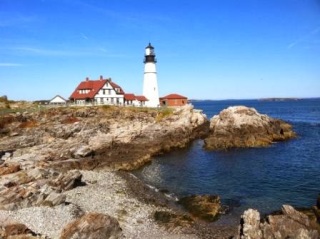 |
| The beautiful Portland Head Lighthouse on the Maine coast.
It was the flash from this lighthouse I could see from the
balcony of my hotel in Ogunquit, far to the south. |
No finite point has meaning without an infinite reference point.
I am the light of the world.
I stood outside on the deck of my hotel listening to the surf quietly lap the beach. It was a beautiful Maine evening, with stars blazing overhead and a gentle breeze blowing warm for early October. Out in the darkness my eyes traced a dim line of lights running along the shore of the peninsula that jutted far out to sea. Where the lights ended, I assumed, was lands end and where the open sea began. I was curious then, when I saw a light flash much farther out to sea. It didn’t take long to realize that the flash was from a lighthouse, which marked the true end of land. It was plain to me then how a lighthouse could make the difference between life and death to a ship sailing off the coast.
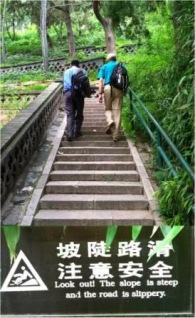 |
| My friends and I had to laugh when we saw this sign in Beijing, China, north of the Forbidden City. It reminded us all about the perilous journey of life. |
A Point of Reference
As I thought about a ship sailing along the coast in rough waters without a reference point to warn it where it could run aground, it occurred to me how similar this is to navigating through life. Who could argue that life is not perilous? And how many lives have been shattered on the rocks of despair, meaninglessness, alcohol and drug addiction, bitterness, anxiety, etc.
How helpful it would be to have a point of reference to warn us of the dangers in life.
Even John-Paul Sartre (quoted above), a famous atheist existentialist, recognized that we finite human beings need an infinite reference point in order to have meaning. However, because Sartre didn’t believe there was an infinite reference point (God), he concluded that life is meaningless. “Man is absurd”, he said, “but he must grimly act as if he were not”. Sartre had worked through the implications of life without God, and his conclusion perfectly illustrates the hopelessness of the atheistic and secularist worldview.
The flash of the lighthouse interrupted my thoughts. Each time I saw it, I was amazed at how far out the shore really ran.
Worldview
All of us have worldviews that, consciously or unconsciously, guide us through life and affect our daily decisions…decisions that could move us closer to or farther away from dangers that could destroy our lives. Francis Schaeffer noted that our worldviews are based on “presuppositions” (1). For example, the presupposition that is championed at the secular university (and widely in our culture) today is the “uniformity of natural causes in a closed system”. Because, it is believed, the system is closed, then there can be nothing outside the system (i.e., God) and therefore, intervention from the outside (miracles or revelation from God) is impossible. With this presupposition, as Oxford mathematician John Lennox so eloquently stated, “we can’t even answer the simple questions of a child: Why am I here? What’s the meaning of life? And so on” (2). This is why Sartre, who believed in the closed system model, concluded that man is absurd.
If, on the other hand, you believe in the “uniformity of natural causes in an open system”, into which God can act, then revelation and miracles are entirely possible. We can receive answers to the simple questions of a child because there is a God who can speak into our system (such as through the Bible). He is our lighthouse.Then the statement by Jesus Christ that he is the light of the world (quoted above) makes sense.
 |
| View from my hotel balcony on the coast of Ogunquit, Maine. At night I could see the Portland Head Lighthouse flashing in the distance at the far right. |
A North Star
Francis Schaeffer went on to say that the Bible gives us an adequate reference point, a North Star for our lives in the infinite-personal God. God is infinite (and thus, provides us a needed infinite reference point), and at the same time personal. How was he personal? The apostle John wrote that God came into the world as a human, a person, whose name was Jesus Christ (3). Jesus reached out and touched the lepers (4), which everyone else was afraid to do because they didn’t want to catch leprosy! He restored the lame (5) and even brought the dead back to life (6). Its hard to imagine getting more personal than that. In fact, read the New Testament and you will learn of many broken lives that, when touched by him, were healed and restored. Truly his mission had profound implications for those whose lives had been shattered on the jagged rocks of life.
Amazingly, the good news for us is that Jesus is still at work, healing and restoring life to all who accept him! (7)
The lighthouse flashed again. Its no accident that Jesus described himself as the light of the world, or that John called him “the true light that gives light to everyone” (8).
It was getting late and I was growing tired. But I went back into my hotel room with a supernatural assurance that God was with me. As John wrote about Jesus: “The light shines in the darkness, and the darkness has not overcome it.” (9)
Footnotes:
(1) He is There He is not Silent, by Francis Schaeffer
(2) An interview with John Lennox, Professor Lennox discusses Christianity, atheism, and science
(3) John 1:1,14,17.
(4) Matthew 8:1-3.
(5) Mark 3:1-6.
(6) Mark 5:21-43; John 11:1-44.
(7) Romans 8:10-11.
(8) John 1:9.
(9) John 1:5.

Photo taken in 1944 after a reading of Picasso’s play El deseo pillado por la cola: Standing from left to right: Jacques Lacan, Cécile Éluard, Pierre Reverdy, Louise Leiris, Pablo Picasso, Zanie de Campan, Valentine Hugo, Simone de Beauvoir, Brassaï. Sitting, from left to right: Jean-Paul Sartre, Albert Camus, Michel Leiris, Jean Aubier. Photo by Brassaï. –
The Beatles – Back In The U.S.S.R (Demo)
Today’s featured artist is Peter Findley
Artist Peter Findlay recalls the day he painted The Beatles’ portraits in Adelaide
- THE ADVERTISER
- JUNE 09, 2014

Flagstaff Hill artist Peter Finlay with his paintings of the Beatles Picture: Tom Huntley
AS a budding young artist in the swinging sixties, Peter Findlay found he could make a few quid — and impress a fair few girls — by drawing pictures of the Beatles.
Little did he think he would actually get to meet the superstars.
Now an established international artist, the then 20-year-old gave Bob Francis and Ron Tremain, the men responsible for bringing the Beatles to Adelaide, free paintings of themselves.
They were so impressed they commissioned him to paint John, Paul, George and Ringo.
On Friday June 12, 1964, as Findlay waited nervously in the South Australian Hotel to meet the Beatles, calamity struck.
The Beatles in Australia 1964 – Adelaide
“The picture of John Lennon was lying on the floor when some clumsy fool stood on it,” Mr Findlay said. “The glass smashed, leaving a scar on John’s face.”
Mr Findlay rang a framer he knew in Adelaide and explained that it was an emergency, but he wasn’t interested.
“I told him: ‘You’ll be a lot more interested when I tell you the client is John Lennon’,” Mr Findlay recalled.
Within minutes, the framer, protecting a pane of glass, was desperately pushing his way through the crowd of around 15,000 screaming fans outside the hotel.

Adelaide artist Peter Findlay (right) with John Lennon (centre), Ernie Sigley (left) and his painting of Paul McCartney.
Findlay had braved the crowds himself half an hour earlier when the former Police cadet was spotted by some of his Fort Largs academy colleagues.
“I was feeling pretty special when I stepped out of Tony Bowden’s white Porsche when I heard someone yell ‘Findlay what the hell are you doing here?’,” the artist said.
“I said ‘I’ve just come to see me mates — The Beatles.
“They gave me heaps about my long hair but I had the last laugh when I showed my press pass and was waved in.”
Findlay caught up with Bob Francis and the pair had a bit of frivolity with a plastic wig of the Beatles haircut that got them both in the bad books with the Australian promoter, Kenn Brodziak.
“This wig was a terrible fake thing but I put it on and along with Bob we popped our heads out of a window,” he said.
“The crowd outside went ballistic screaming and yelling.
“Just then Kenn Brodziak came in and was giving Bob heaps saying ‘Francis, you think you own this effing city.’
“The thing, is Bob did own the city that day — and he thinks he’s owned it ever since.”

Adelaide artist Peter Findlay (left) with the Beatles (including Jimmy Nichol) and an interviewer looking at the portrait of John Lennon
When he finally met up with John, Paul and George, Ringo was too ill to travel to Adelaide, he was thrilled with their excited response to his paintings.
“I told John (Lennon) the story of what had happened to his painting and he said ‘I rather like the idea of getting a footprint on my cheek’, Findlay says in a perfect Liverpool accent.
Not that speaking ‘scouse’ helped him in a conversation with Paul McCartney.
“I asked Paul how did he like the paintings and he replied ‘Ponies? We didn’t get any Ponies?”, he remembered.
“I emphasised the word “paintings” to which he replied “Ooh … the PAINTINGS! … Best paintings we’ve ever ‘ad…..We ain’t ‘ad any uthers though.”
Findlay recalls feeling sad for Jimmy Nichol, Ringo’s stand-in who looked ‘more like Frankenstein without the bolt’ because of his weird haircut.
John Lennon scribbled a lengthy thank you note, that every Beatle signed including Nichol, but regretfully — Findlay’s lost it.
Those autographs were definitely the real deal, but there is someone with an autograph from the day who may not like what she reads next.

Adelaide artist Peter Findlay (right) with John Lennon looking at his portrait of John Lennon.
On his way out of the South Australian Hotel Findlay was approached by an insistent young lady convinced he was famous.
“I didn’t want to disillusion her so I said I was George Harrison’s brother,” Findlay laughs.
“She walked away on cloud nine with the signature of ‘Peter Harrison’.”
He doesn’t know where any of his paintings of the Beatles are today, they were all taken back to England, but photos of them have appeared in several books on the Fab Four.
Findlay effectively became a professional artist that momentous day in 1964 and would later paint portraits of The Bee Gees, Mick Jagger, John Farnham, Billy Thorpe among many other rock and roll stars.
He also became an expert in diagrammatical paintings of horses and was a regular visitor at the stables of Colin Hayes and Bart Cummings in the 60s and 70s to record their champions on canvas.
Along with three daughters and two grandchildren, he regards his greatest triumph as helping SA artists produce over 45,000 paintings as Director of the Panorama Art Group that he established in 1969.
“Hanging out with the Beatles only lasted a few minutes but that achievement has been a long lasting satisfaction,” he added.
The Flagstaff Hill resident caught up with an original set of his Beatles paintings last week at the home of owner Steve Gates, who couldn’t believe the quality when offered them by a friend of friend.

Adelaide artist Peter Findlay with Ernie Sigley and his paintings of the Beatles
“I did a couple of versions to make sure the Beatles got the best ones and I’m pretty sure these
are the first ones I did,” Mr Findlay said admiring his work of half a century ago.
He contacted The Advertiser in response to our search to find the ‘Ringo Lookalike’, now identified as Adele Minns, as he remembered the teenager being at the South Australian Hotel when he handed over the portraits to John, Paul and George.
“I was a little over awed being in the same room with the Beatles, but after speaking to them, they were just like anyone else,” Findlay said.
“They loved the paintings and John in particular was making a big deal and clowning around.”
The same day Mr Findlay got in touch with The Advertiser, avid memorabilia collector Steve Gates contacted The Advertiser saying he had four paintings of the Beatles — all with the signature ‘Findlay’.
Mr Gates, who is reliving his youth with 70s pop idol Andy Upton and TV and Radio star Barry Ion in a local rock band, Platinum +, couldn’t believe his luck when offered the paintings by a friend of a friend.
“The quality was just superb and the guy who framed them reckoned they would be worth a small fortune,” Mr Gates said.
Mr Findlay has seen photographs of his paintings in books on the Beatles and once got exciting confirmation that at least one ‘Mop Top’ kept his work and rated it highly.

Adelaide artist Peter Findlay (centre), with Beatle George Harrison (left) and media personality Ernie Sigley (right).
His former fiancee, Christine Howard, Miss South Australia 1970, who left for a ‘celebrity’ life in England soon after they split up, rang him unexpectedly from Los Angeles.
“Christine rang me all excited saying she was at George Harrison’s house and my painting was up on his wall,” Findlay said.
“I said ‘You’re not in the toilet are you? — I really expected the lads to hang the paintings in the dunny.”
On the contrary, the painting had pride of place above the mantelpiece in Harrison’s large living room.
Mr Findlay has shared his Beatles experiences with his three daughters and two grand children.
“I thought they would be bored to death but they’re not,” he added.
“It seems every new generation loves the Beatles — that’s how special they really were.”
Related posts:
FRANCIS SCHAEFFER ANALYZES ART AND CULTURE Part 67 THE BEATLES (Part Q, RICHES AND LUXURIES NEVER SATISFIED THE BEATLES! ) (Feature on artist Derek Boshier )
_____________ The Beatles were looking for lasting satisfaction in their lives and their journey took them down many of the same paths that other young people of the 1960’s were taking. No wonder in the video THE AGE OF NON-REASON Schaeffer noted, ” Sergeant Pepper’s Lonely Hearts Club Band…for a time it became the rallying cry for young people throughout […]
FRANCIS SCHAEFFER ANALYZES ART AND CULTURE Part 66 THE BEATLES (Part P, The Beatles’ best song ever is A DAY IN THE LIFE which in on Sgt Pepper’s!) (Feature on artist and clothes designer Manuel Cuevas )
SGT. PEPPER’S LONELY HEARTS CLUB BAND ALBUM was the Beatles’ finest work and in my view it had their best song of all-time in it. The revolutionary song was A DAY IN THE LIFE which both showed the common place part of everyday life and also the sudden unexpected side of life. The shocking […]
FRANCIS SCHAEFFER ANALYZES ART AND CULTURE Part 65 THE BEATLES (Part O, The 1960’s SEXUAL REVOLUTION was on the cover of Sgt. Pepper’s!) (Featured artist is Pauline Boty)
_ The Beatles wrote a lot about girls!!!!!! The Beatles – I Want To Hold your Hand [HD] The Beatles – ‘You got to hide your love away’ music video Uploaded on Nov 6, 2007 The Beatles – ‘You got to hide your love away’ music video. The Beatles – Twist and Shout [live] THE […]
FRANCIS SCHAEFFER ANALYZES ART AND CULTURE Part 64 THE BEATLES (Part P The Meaning of Stg. Pepper’s song SHE’S LEAVING HOME according to Schaeffer!!!!) (Featured artist Stuart Sutcliffe)
__________ Melanie Coe – She’s Leaving Home – The Beatles Uploaded on Nov 25, 2010 Melanie Coe ran away from home in 1967 when she was 15. Paul McCartney read about her in the papers and wrote ‘She’s Leaving Home’ for Sgt.Pepper’s. Melanie didn’t know Paul’s song was about her, but actually, the two did […]
FRANCIS SCHAEFFER ANALYZES ART AND CULTURE Part 63 THE BEATLES (Part O , BECAUSE THE BEATLES LOVED HUMOR IT IS FITTING THAT 6 COMEDIANS MADE IT ON THE COVER OF “SGT. PEPPER’S”!) (Feature on artist H.C. Westermann )
__________________ A Funny Press Interview of The Beatles in The US (1964) Funny Pictures of The Beatles Published on Oct 23, 2012 funny moments i took from the beatles movie; A Hard Days Night ___________________ Scene from Help! The Beatles Funny Clips and Outtakes (Part 1) The Beatles * Wildcat* (funny) Uploaded on Mar 20, […]
FRANCIS SCHAEFFER ANALYZES ART AND CULTURE Part 62 THE BEATLES (Part N The last 4 people alive from cover of Stg. Pepper’s and the reason Bob Dylan was put on the cover!) (Feature on artist Larry Bell)
_____________________ Great article on Dylan and Sergeant Pepper’s Lonely Hearts Club Band Cover: A famous album by the fab four – The Beatles – is “Sergeant peppers lonely hearts club band“. The album itself is one of the must influential albums of all time. New recording techniques and experiments with different styles of music made this […]
FRANCIS SCHAEFFER ANALYZES ART AND CULTURE Part 61 THE BEATLES (Part M, Why was Karl Marx on the cover of Stg. Pepper’s?) (Feature on artist George Petty)
__________________________ Beatles 1966 Last interview 69 THE BEATLES TWO OF US As a university student, Karl Marx (1818-1883) joined a movement known as the Young Hegelians, who strongly criticized the political and cultural establishments of the day. He became a journalist, and the radical nature of his writings would eventually get him expelled by the […]
FRANCIS SCHAEFFER ANALYZES ART AND CULTURE Part 60 THE BEATLES (Part L, Why was Aleister Crowley on the cover of Stg. Pepper’s?) (Feature on artist Jann Haworth )
____________ Aleister Crowley on cover of Stg. Pepper’s: _______________ I have dedicated several posts to this series on the Beatles and I don’t know when this series will end because Francis Schaeffer spent a lot of time listening to the Beatles and talking and writing about them and their impact on the culture of the 1960’s. […]
FRANCIS SCHAEFFER ANALYZES ART AND CULTURE Part 59 THE BEATLES (Part K, Advocating drugs was reason Aldous Huxley was on cover of Stg. Pepper’s) (Feature on artist Aubrey Beardsley)
(HD) Paul McCartney & Ringo Starr – With a Little Help From My Friends (Live) John Lennon The Final Interview BBC Radio 1 December 6th 1980 A young Aldous Huxley pictured below: _______ Much attention in this post is given to the songs LUCY IN THE SKY WITH DIAMONDS and TOMORROW NEVER KNOWS which […]
____
______________










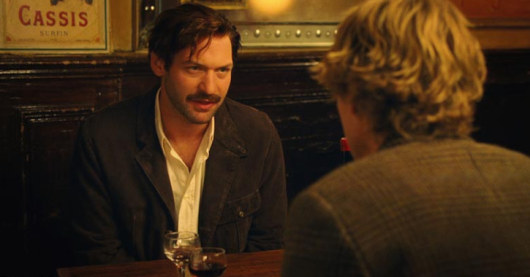
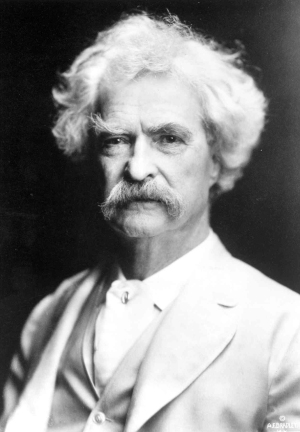









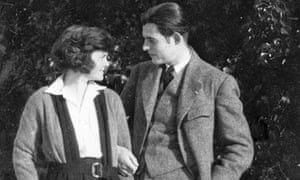
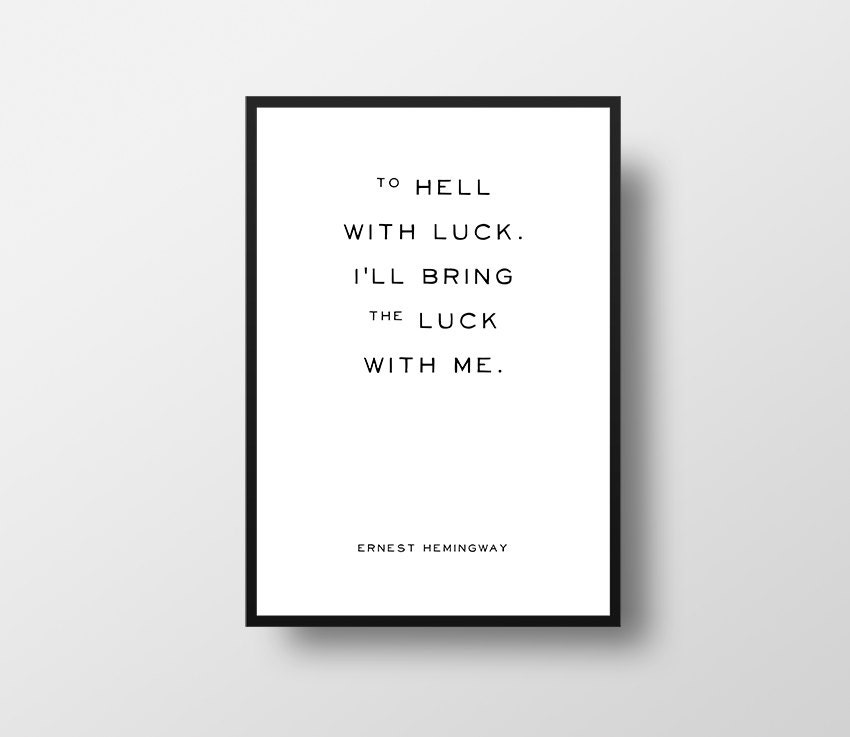









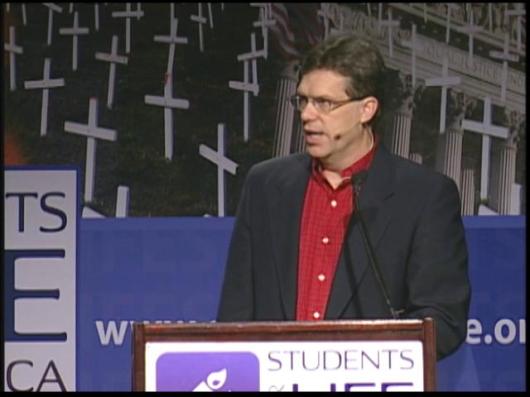
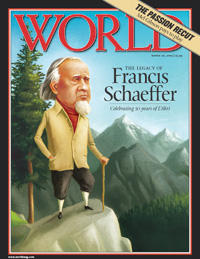













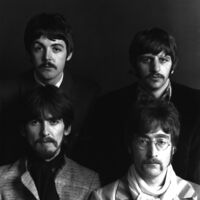
:format(jpeg):mode_rgb():quality(40)/discogs-images/A-82730-1519052220-3776.jpeg.jpg)
